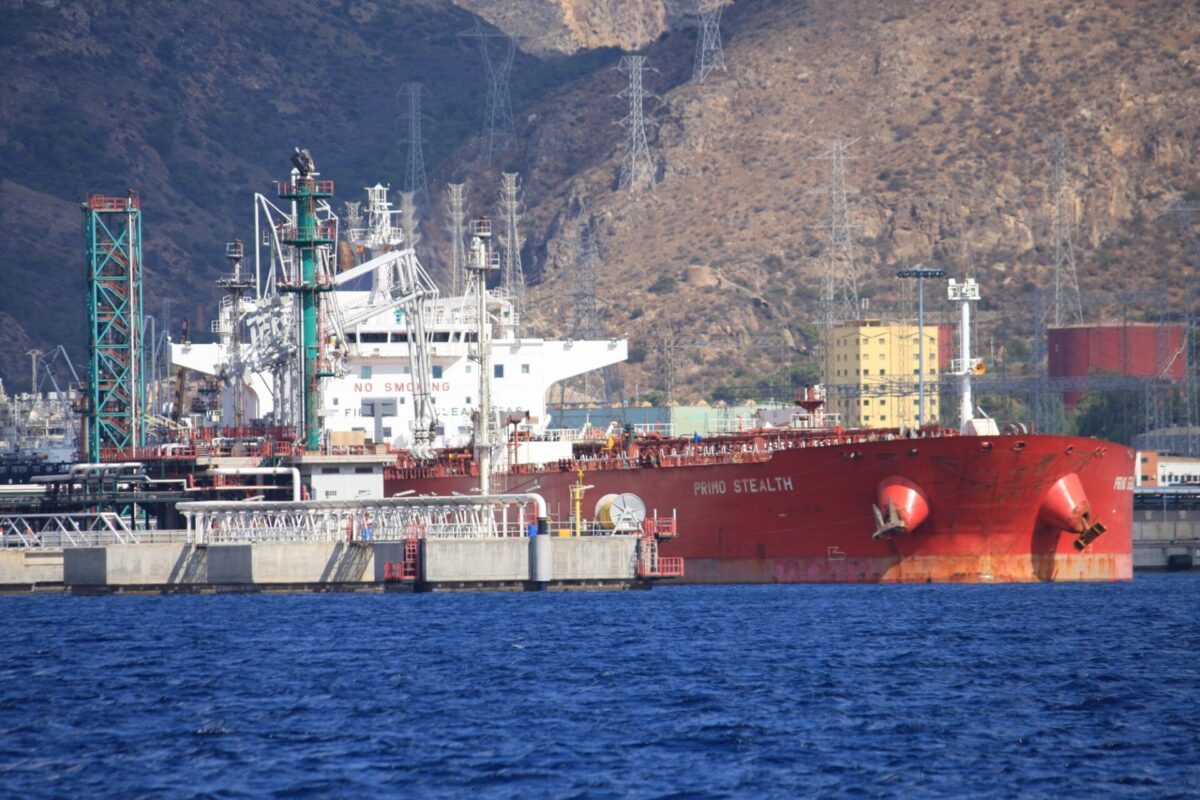Tensions in the Baltic Sea escalated on May 13, 2025, after a Russian Su-35 fighter jet violated Estonian airspace in what Tallinn described as a “dangerous act of aggression” intended to disrupt the interception of a suspected sanctions-busting oil tanker.
Estonia intercepts suspicious tanker
The incident began when the Estonian Navy identified the M/T Jaguar, a Gabon-flagged oil tanker operated by India-based Gatik Ship Management, en route to the Russian port of Primorsk. The company is already known for its involvement in transporting Russian oil outside Western sanctions regimes.
The vessel, previously known as Argent and Primo Stealth, was intercepted near Hogland Island by the Estonian Navy’s patrol vessel EML Raju, supported by an A139 helicopter and an M-28 Skytruck reconnaissance aircraft. Estonian authorities reported that contact had been made with the ship, but the crew refused to comply with inspection orders and continued its course toward Russian waters, transiting through Estonia’s Exclusive Economic Zone (EEZ).
Russian Su-35 breaches airspace to disrupt operation
While the Jaguar defied orders, a Russian Su-35 Flanker fighter jet was observed in the vicinity, shadowing the two ships.
🧵 DEVELOPING: Russian shadow fleet oil tanker JAGUAR ordered to change course as part of detention by Estonian navy accompanied by a helicopter in the Gulf of Finland as it was making its way back to Primorsk, Russia.Russian Su-35 breached Estonian airspace and appeared nearby. pic.twitter.com/jxfnq7sjtB
— Igor Sushko (@igorsushko) May 14, 2025
Estonia’s Ministry of Defense confirmed that to reach the area, the aircraft breached Estonian airspace near the Juminda Peninsula for under a minute, flying without a filed flight plan, with its transponder turned off, and without maintaining radio contact with local air traffic control.
The government stated that the fighter jet’s presence was directly intended to disrupt Estonia’s maritime enforcement operation. Portuguese F-16 fighters stationed at Ämari Air Base, deployed as part of NATO’s Baltic Air Policing mission, were scrambled to conduct a reconnaissance flight in response.
Estonia’s Ministry of Foreign Affairs summoned the chargé d’affaires of the Russian Embassy in Tallinn the following day to deliver a formal note of protest.
After the short-lived confrontation, the Jaguar continued its route uninterrupted and eventually reached the Russian oil export terminal at Primorsk around midnight local time.
Russia’s ‘ghost fleet’ fuels maritime tensions
Russia’s so-called “ghost fleet”, also known as the “shadow fleet”, is a network of aging oil tankers used to circumvent Western sanctions imposed after the 2022 invasion of Ukraine. These vessels often sail under flags of convenience, such as Gabon or Panama, with obscured ownership and opaque insurance records.
They frequently disable their transponders, falsify shipping documents, and conduct ship-to-ship transfers in open waters to mask the origin of their cargo. Some of these vessels were also linked to suspected sabotage of underwater infrastructure, including internet cables.
The Jaguar is among the ships linked to this network and had previously been sanctioned by the United Kingdom. According to a report by the Kyiv School of Economics, some 430 ships have been identified as making up this ghost fleet worldwide. On May 14, 2025, the European Union adopted a new package of sanctions targeting nearly 200 such vessels and several dozen associated entities helping Russia circumvent existing restrictions.
“Estonia exercised its right to inspect a shadow fleet vessel passing through its exclusive economic zone, the unflagged and uninsured Argent/Jaguar, which is sanctioned by the United Kingdom,” Estonian Foreign Minister Margus Tsahkna commented from NATO’s ministerial meeting in Antalya, Turkey. “Russia responded dangerously aggressively by accompanying the shadow fleet tanker with a fighter jet, which violated Estonian airspace in the process. This case is yet another example proving that Russia poses a serious threat not only with its military action in Ukraine, but much more broadly.”
Though this marks the first confirmed Russian airspace violation over Estonia in 2025, it is part of a broader trend of provocative Russian behavior in the Baltic Sea.
In November 2024, the German Navy frigate Nordrhein-Westfalen escorted a Russian corvette and a civilian tanker through the Baltic. When a German NH90 Sea Lion helicopter approached for inspection, the Russian crew launched flares rather than responding via standard radio protocols.
In March 2025, a French Navy Atlantique 2 (ATL2) maritime patrol aircraft was illuminated by the fire control radar of a Russian naval unit during a NATO surveillance mission over international waters. The flight was part of Operation Baltic Sentry, a NATO initiative aimed at monitoring and protecting critical underwater infrastructure.




